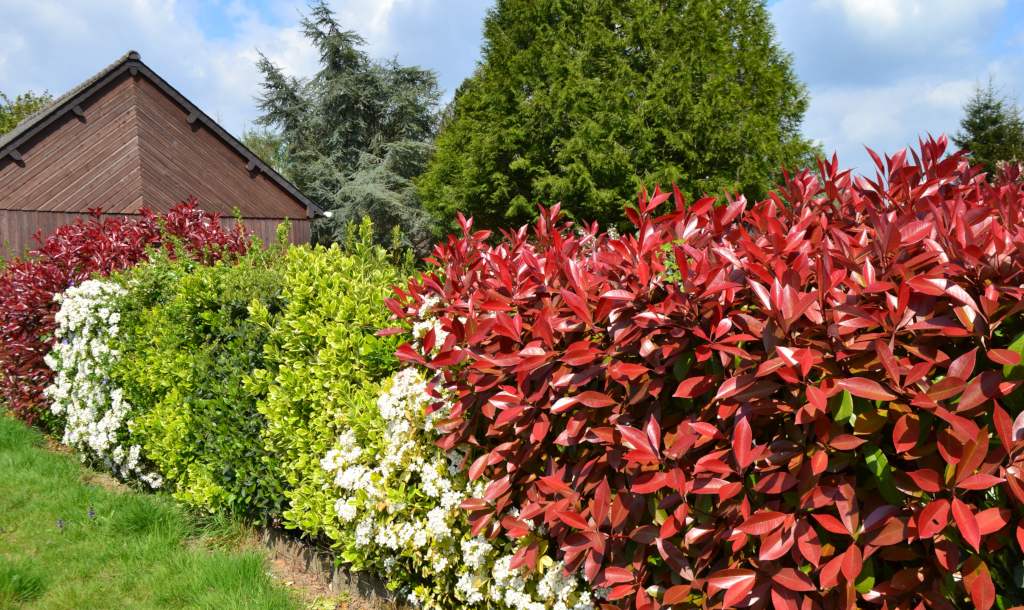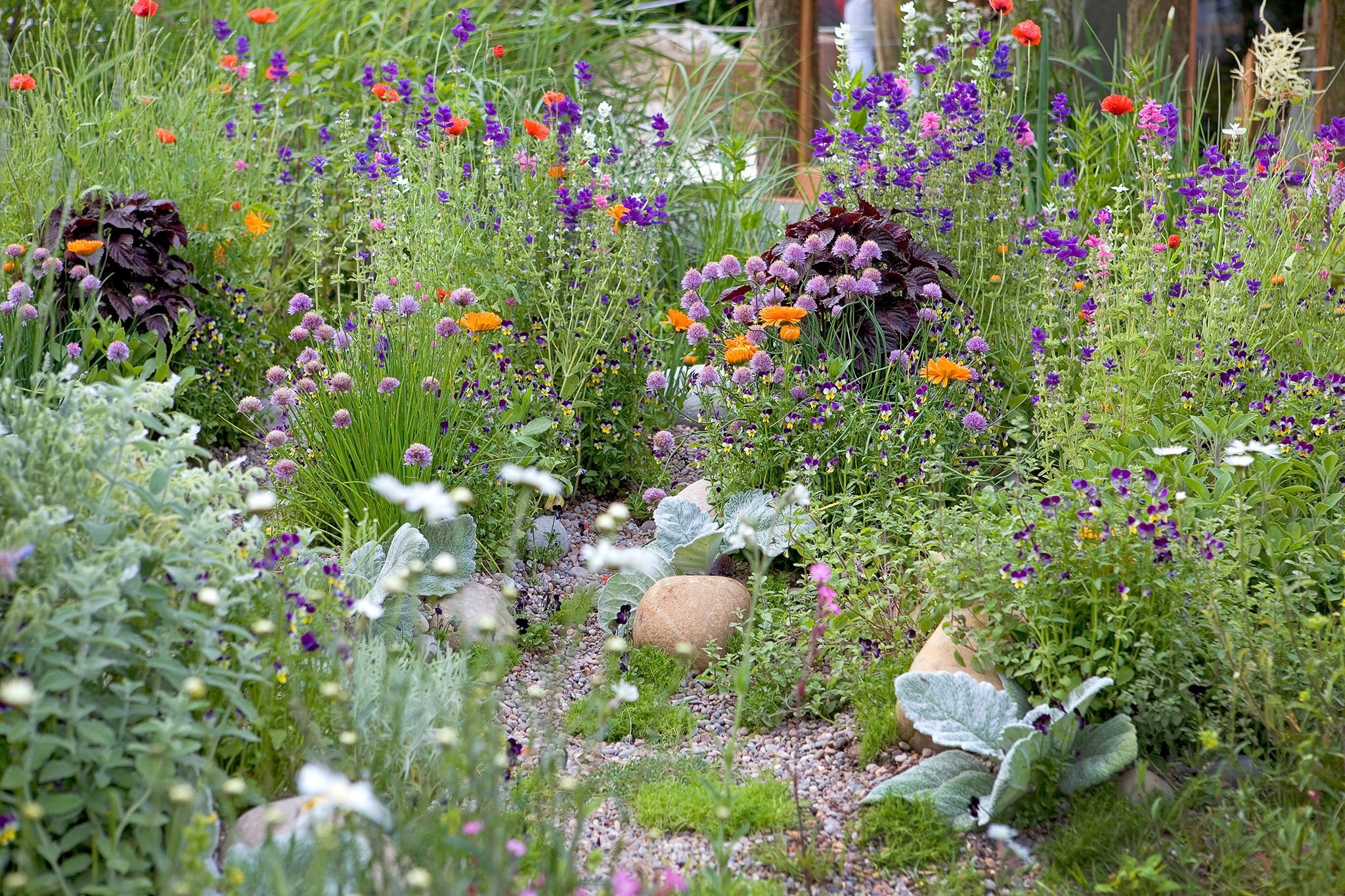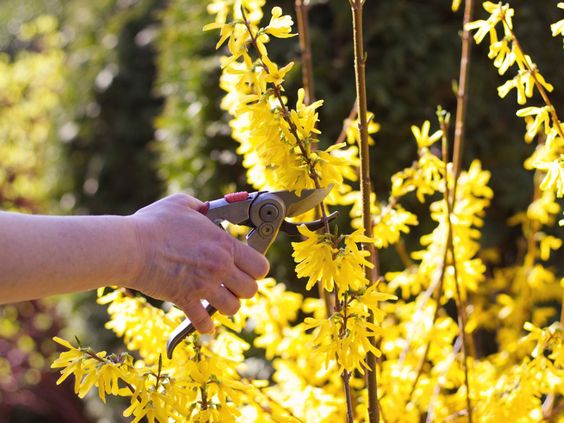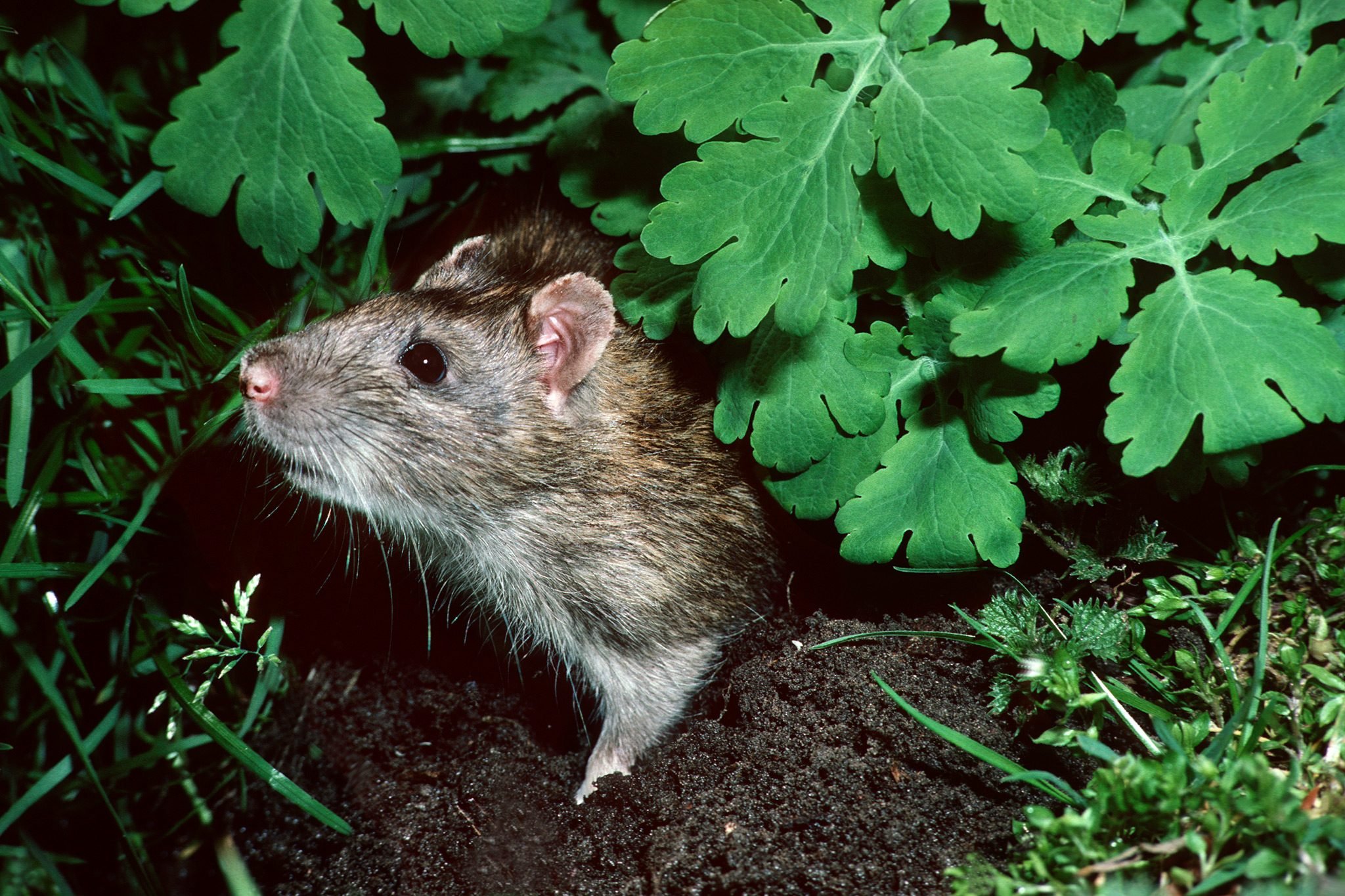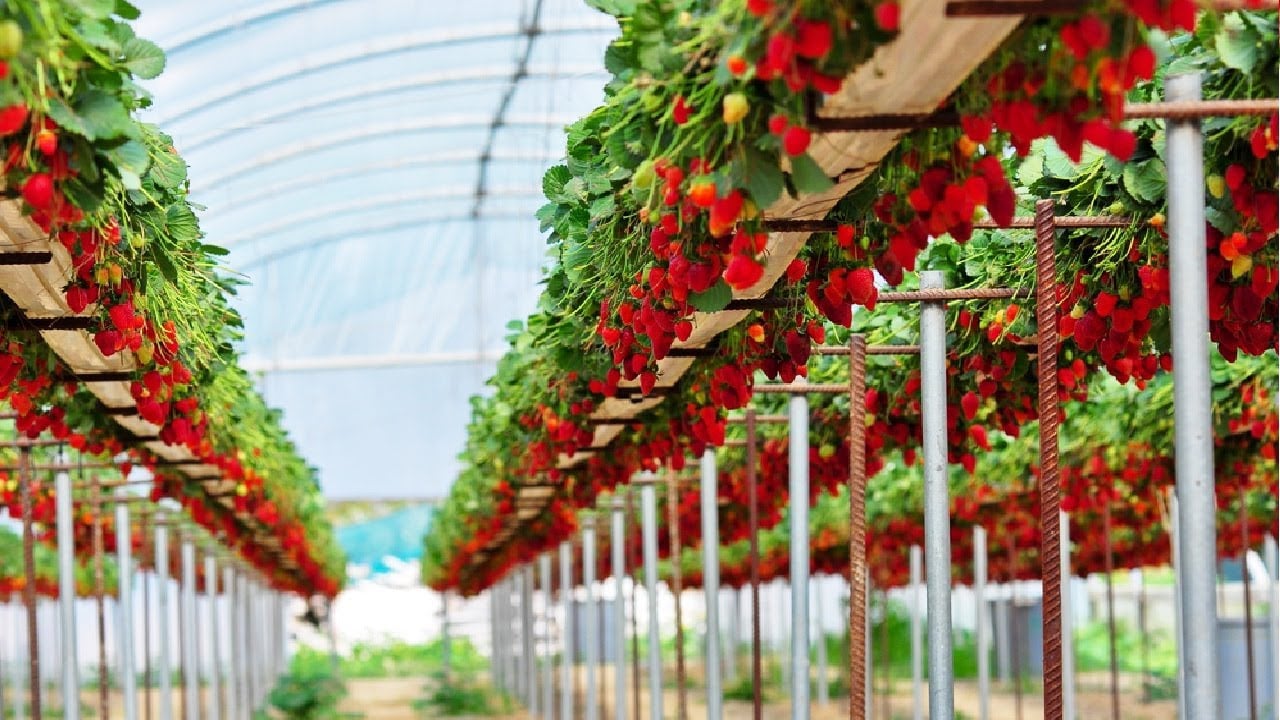20 Genius Ways to Create a Vertical Garden in Limited Space
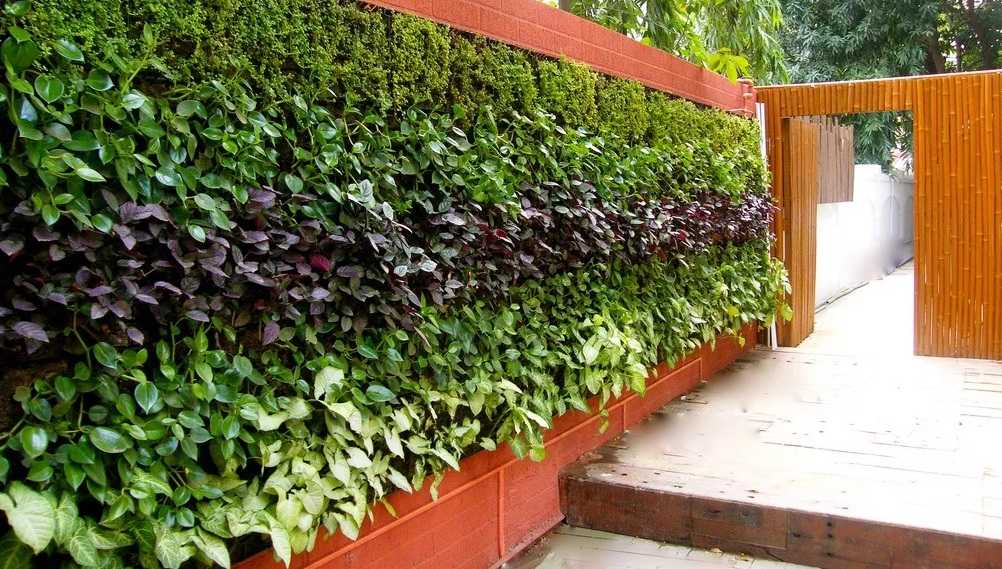
Table of Contents
By cultivating plants, hanging pots, and containers vertically up against a wall or other vertical surfaces, a vertical garden is a clever and creative method to make the most of the space that is available. It is a great choice for individuals with a small yard who want to design a garden that is both useful and beautiful. You may develop a range of vegetables and herbs that suit your preferences and climate.
Thanks to the various vertical garden ideas and designs available. When choosing plants that will flourish in your garden, it is important to take the growing condition such as sunlight, water, and temperature into account. Vertical gardens are an attractive and useful alternative to traditional gardens since they can be quickly and easily accessed and replanted. You may also add some greenery and create a distinctive feature that will improve the appearance of your home or yard by introducing a vertical garden into your outdoor space.
Below are some of the ideas for creating a beautiful garden, even in the small space of your house or yard.
1. Ladder Vertical Garden
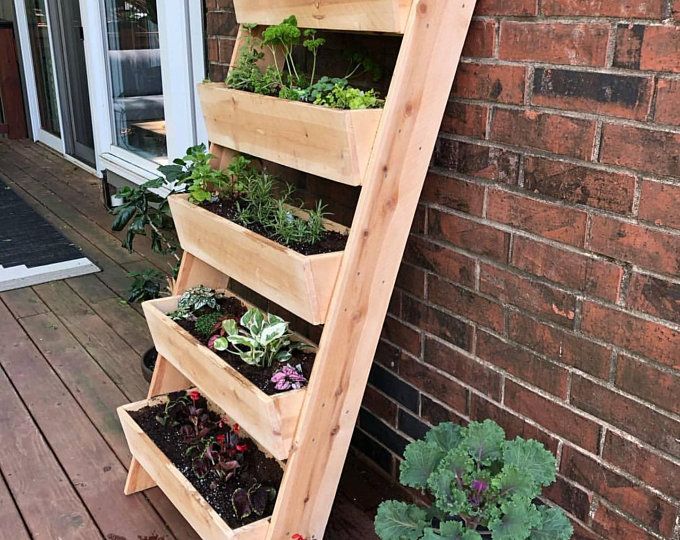
On each step of the ladder, wooden planter boxes are positioned at regular intervals. You can build a ladder planter with five shelves. Urban gardeners or those with little outside space will find this innovative design to be an excellent method to grow a variety of plants in a tiny space. If you’re searching for a distinctive and eye-catching garden feature, this idea is undoubtedly one of the concepts available.
2. Wire and Bucket Style
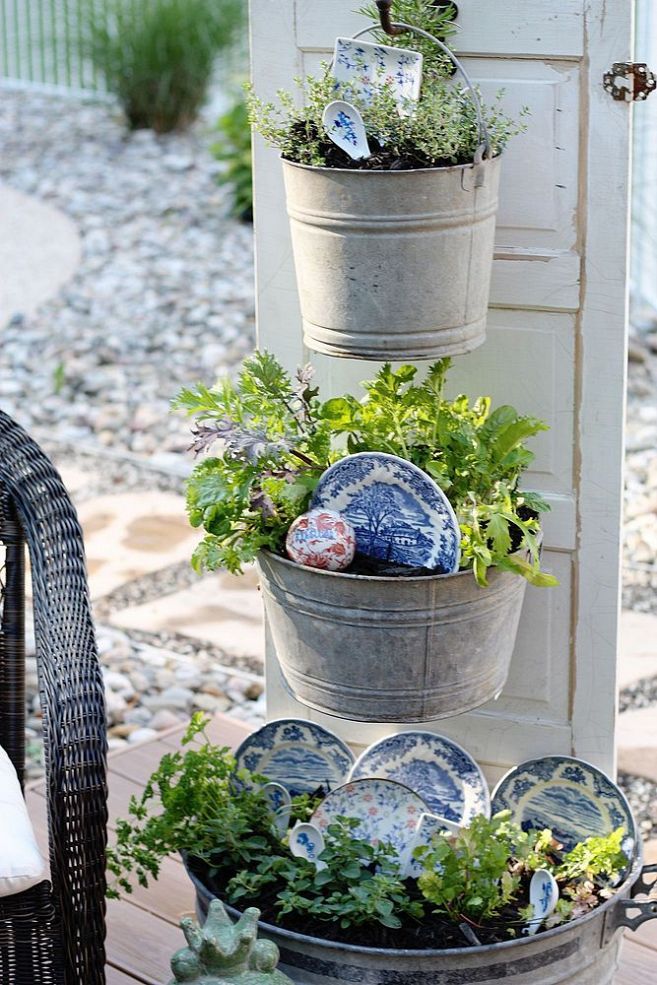
This idea can be tailored to suit any space. Before you plant your chosen flowers, herbs, or even strawberries in the bucket, holes should be bored at the bottom to guarantee good drainage. You can use low-cost wooden spoons as garden markers. The pots are strung on wires to give a distinctive and striking appearance. This design is adaptable, so you can decide how many wires and buckets to use based on your preferences and available space.
3. Hanging Garden Idea with Redwood Bowls
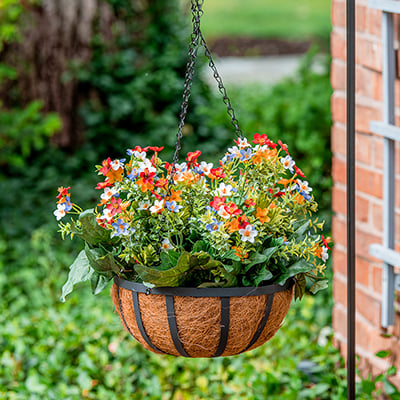
An attractive and modern hanging garden with spring blooms in orange and white can be made using redwood bowls. A significant impact can be achieved while retaining a clean and basic appearance by adjusting the height of each box and fastening them to a wooden fence. This style is perfect for tiny gardens with constrained space, as a screen to obscure undesirable views or to establish a private place inside a big backyard. This is a modern design as well as a useful feature.
4. Recycling Old Jeans Into a Mini Garden
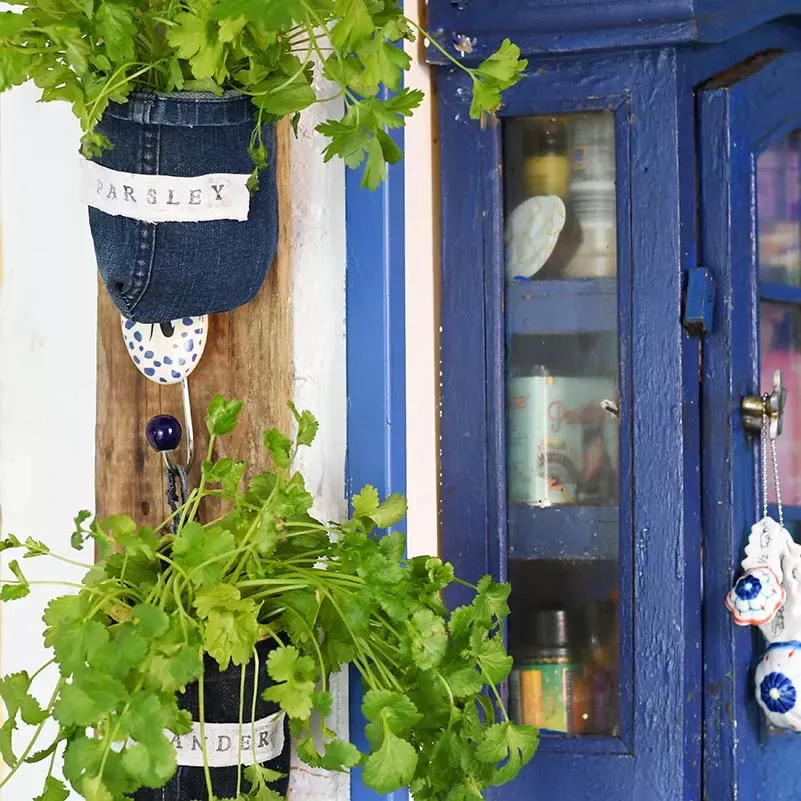
If you are looking for a creative method to decorate your garden, think of creating a full planter pocket from an old pair of pants. These denim planters have a strong lining to keep the dirt and moisture confined. By reusing existing materials, this design looks fantastic as well as contributes to waste reduction. This is a great way to add some colours and greenery to your home or garden, whether you are an experienced gardener or just getting started.
5. Modern and Sleek with Metal Pipe
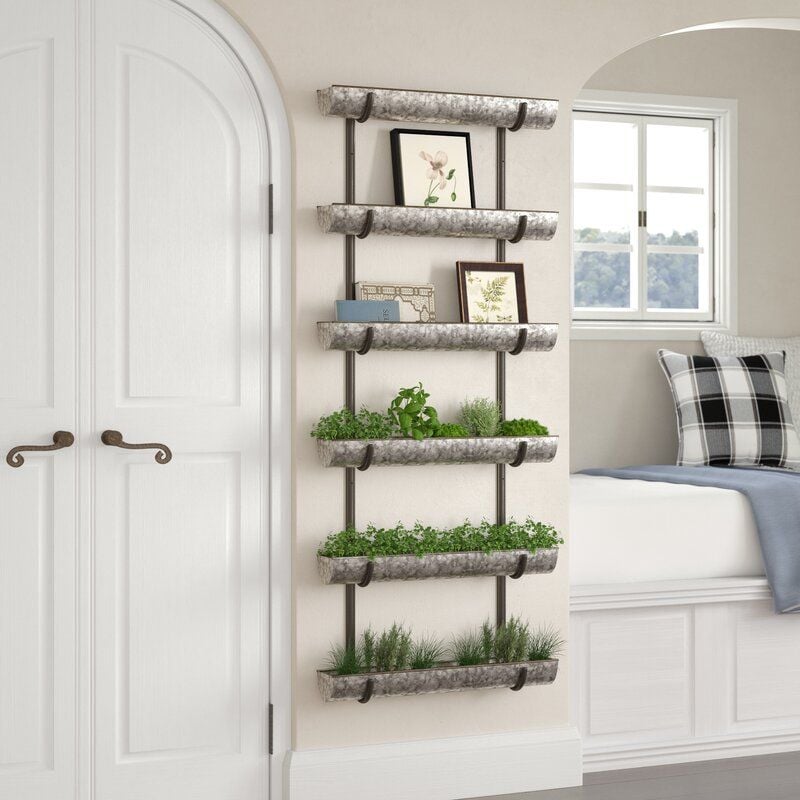
Creating a garden out of metal pipes is a method that brings nature into a contemporary setting. A stunning contrast between industry and nature is produced by joining pipes of various colours and adding greenery in varying tones. Each planter is connected by a thin metal wire that adds support and gives an impact of a ladder. This style is ideal for modern construction that seeks to incorporate some vegetation or for minimalist home decor.
6. Mini Fairyland Garden
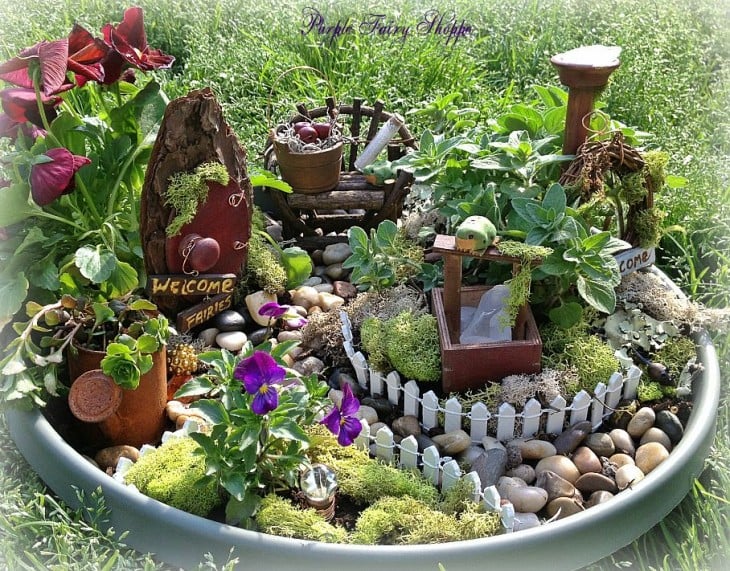
Broken pot shards can be used to construct a tier-like structure that is ideal for growing tiny plants by arranging them in an uneven fashion and filling them with soil. The fanciful and mesmerized atmosphere is enhanced by the inclusion of odd fairy dwellings and miniature plants that mimic trees. Consider putting the pot on a wheeled base so you can move it around the porch with ease and convenience.
7. Plastic Bottle Use
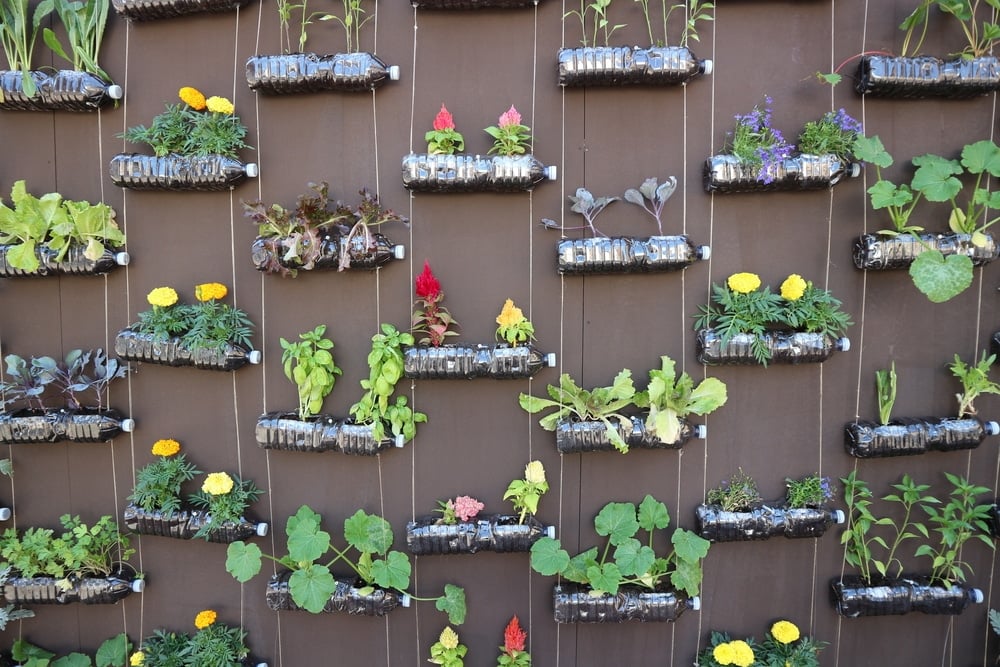
Here is a creative way to recycle plastic bottles and build an environment-friendly vertical garden. Simply cut a chunk out of the bottle, make holes on either side for garden twine, fill it with soil, and plant your preferred seeds and seedlings. The rope can be used to hang the bottles from strong objects like fence posts or wall nails. This arrangement can simply be duplicated by trying several bottles along the same length of strings.
8. Reuse Old Boots
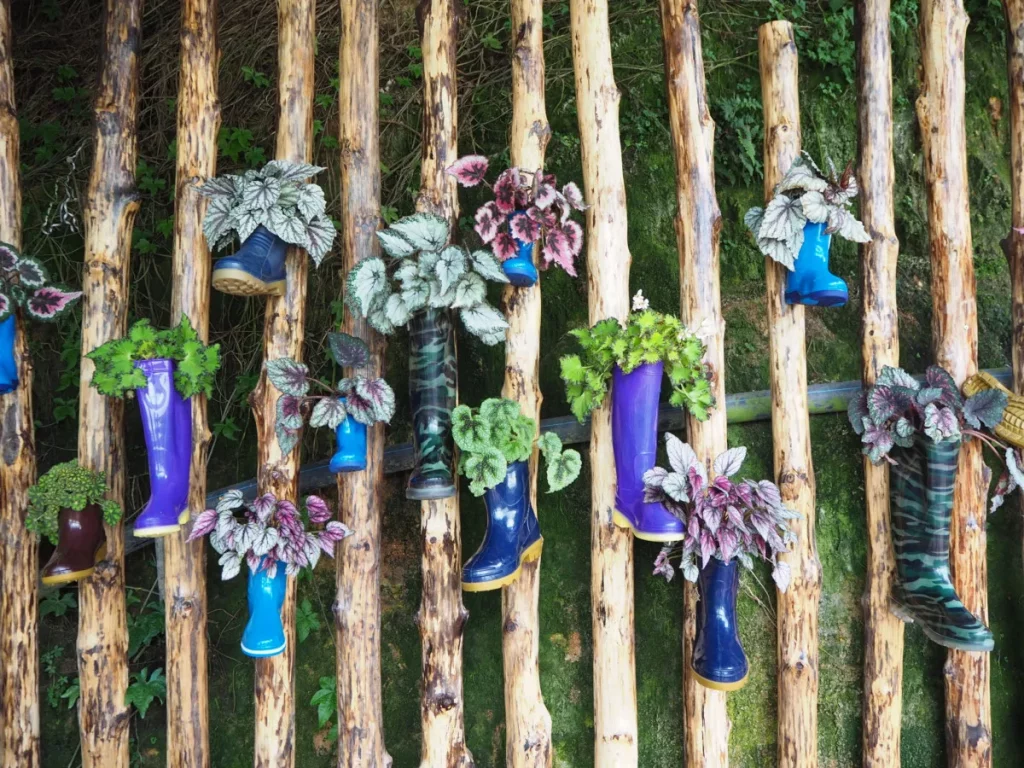
Old boots can be recycled into a vertical garden by being nailed to a shed door or a fence. Children’s boots are especially suited because they frequently include vibrant and entertaining patterns. If you do not have any such boots in your house, you might choose to look in shops or Internet. Before planting your preferred herbs or flowers and filling the boots with dirt, make sure you have made holes in the bottom for proper drainage.
9. Old Drawer Recycle
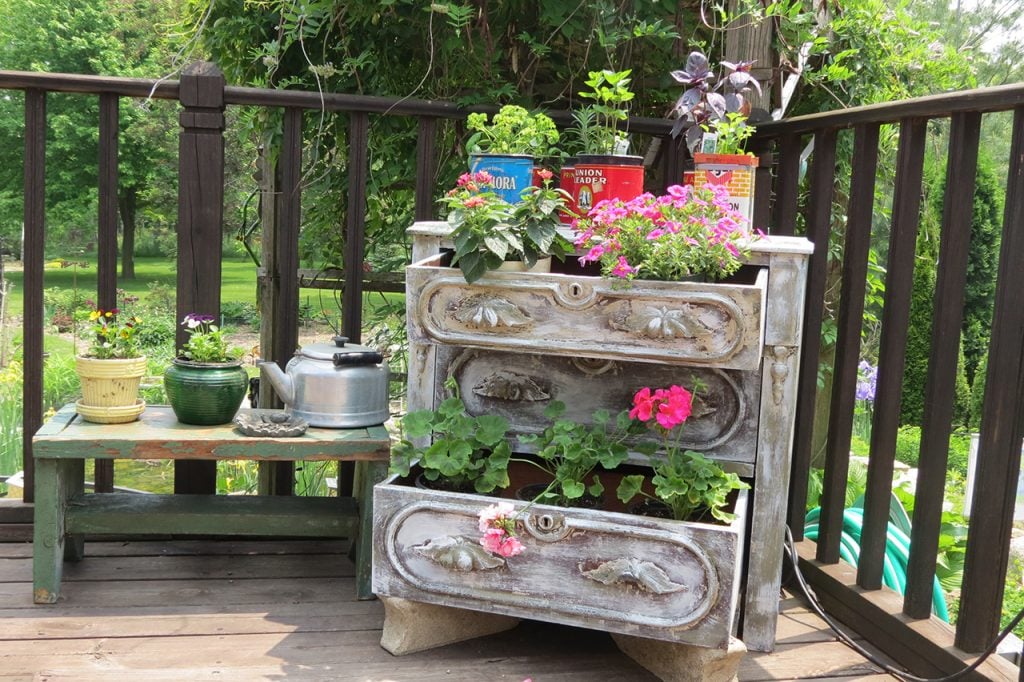
The location of the chest of drawers is crucial to the success of this plan. It should be placed in an area with adequate sunlight, but not so much that the plants start to wilt. You may also give them a beautiful outlook by painting them in vivid colours or adding a pattern with stencils. To get a rustic appearance, another choice is to leave it in its natural state. This style may add some elegance to your outdoor area.
10. Modern Mesh
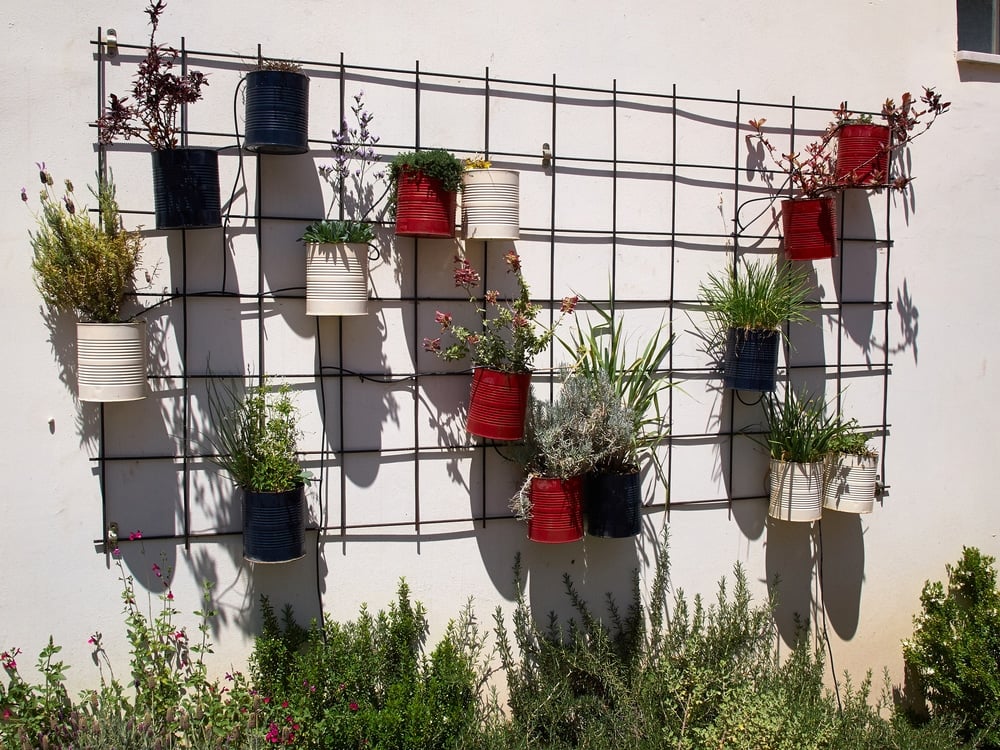
Consider clustering the wire mesh or grid panels in various sizes and combinations to produce a dynamic and aesthetically pleasing wall of greenery. This style works with low-maintenance plants because they do not need a lot of soil and can grow in confined locations. Due to its easy installation on a balcony or porch, this style is especially ideal for people who have little outside space. It is an excellent approach to bringing a little bit of nature into a normal urban setting.
11. Eclectic Garden View
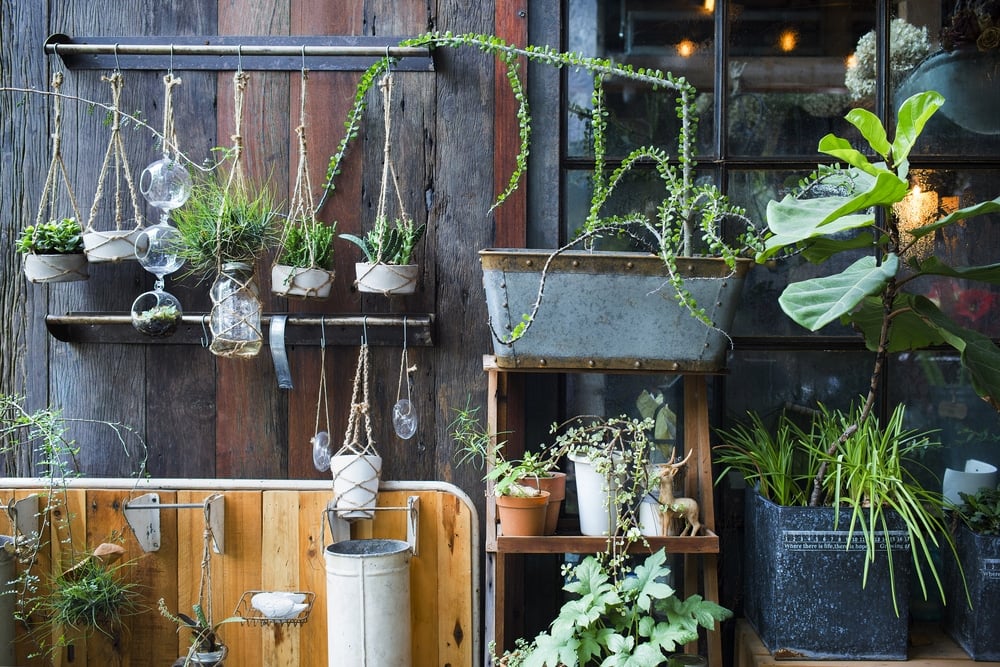
To create a stylish and varied appearance, this vertical garden has been constructed utilizing a variety of several pot shapes and materials. You might include a wooden plant ladder, metal buckets, and plant hangers to make a display that contrasts. Place your plants in front of a fence or window for an industrial appearance. Grass, herbs, and succulents are a good choice for a vertical garden since they add natural beauty without being overpoweringly colourful.
12. Trainling Plants for Green Wall
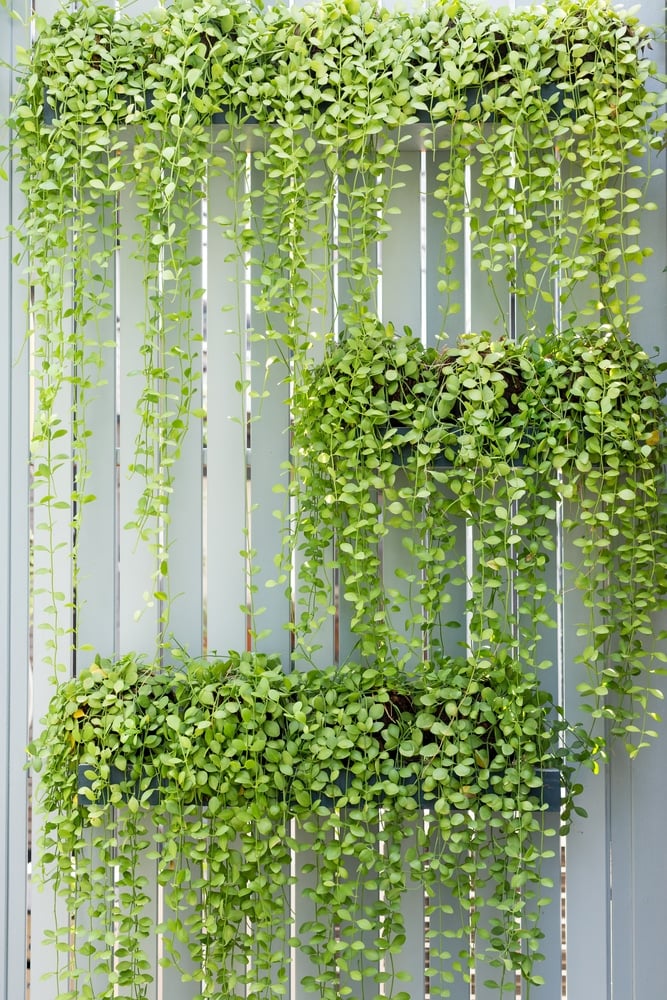
You can start by employing trailing plants to provide more greenery to a space which can be achieved with occasional herb pots. They are particularly effective in hiding ugly walls or locations. You can use a trellis in front of the wall in containers that are affixed to the wall. The foliage of the plants will cascade down the wall as they grow, forming a rich and verdant show. This can enhance the area’s quality while transforming a drab and lifeless space into one that is lively and revitalizing.
13. Use Fabric Pockets
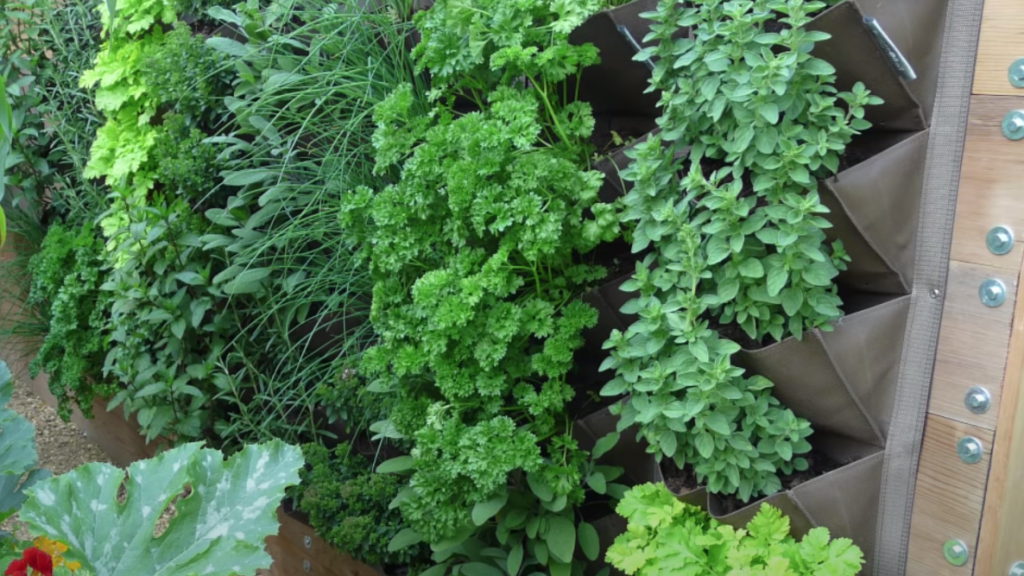
Use fabric pockets that are frequently offered at home goods stores for storing clothing or shoes as a quick and inexpensive way to cover a vertical space with plant bags as an alternative. Screws make it simple to fasten these to a surface. After placing the pouches, fill them will gravel and compost and finally, plant your chosen plant. Plants with similar coloured foliage should be placed adjacent to one another to produce a unified and attractive appearance.
14. Shelf Your Garden
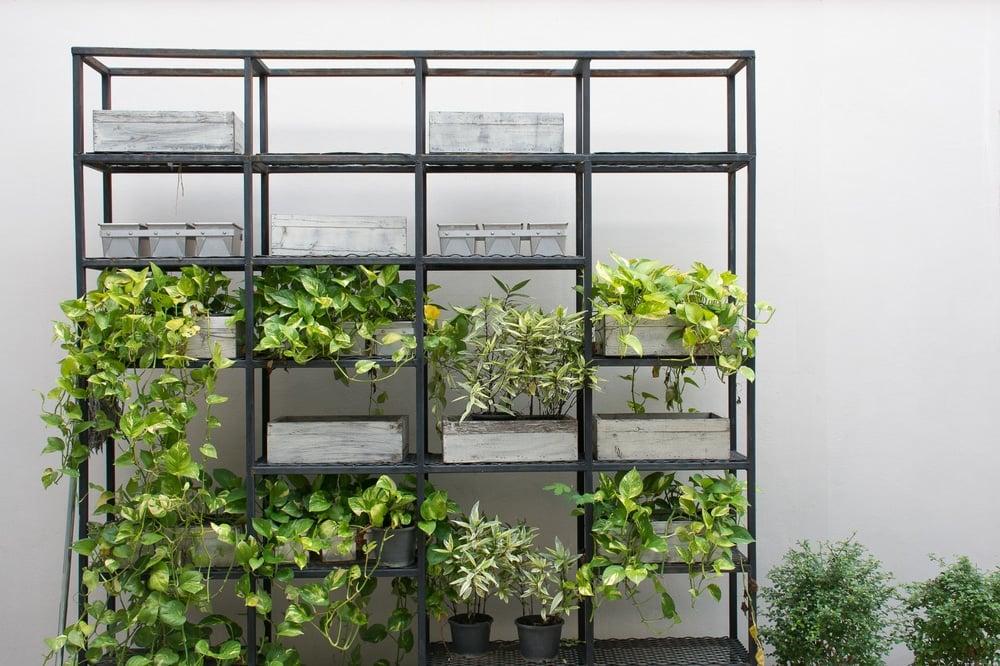
Bring an outdated bookshelf or shelving unit outside and repurpose it as a garden exhibit. Stock them with a variety of potted plants and containers. The best option is a metal shelf unit because you can add extra plants by hanging baskets from the rails. To protect your wooden item from moisture and the elements, add a protective stain. In case you have a metal shelf, you can use a finisher that resists corrosion to make sure they endure longer.
15. Hydroponic Method for Gardening
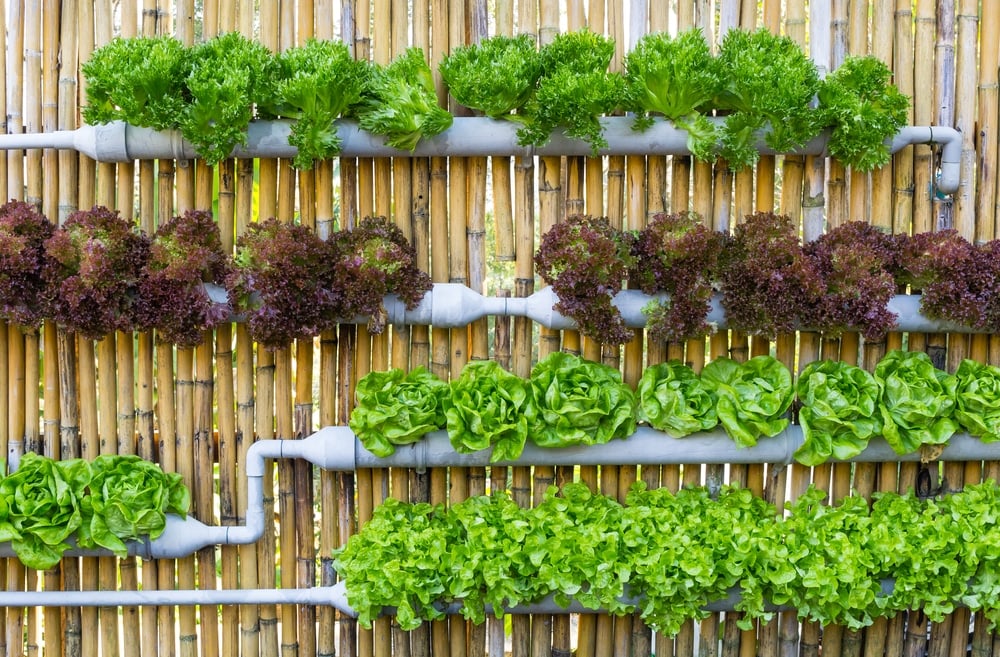
A more effective and clean way to grow plants in water without using soil is hydroponics. In order to give plants the necessary nutrients for their best growth, a fertilizer solution is added to the water. Drilling holes in PVC pipes, connecting and installing the pipes on a wall or fence, and placing a submersible pump in a bucket of water with nutritional solutions are the steps required to make a straightforward hydroponic vertical garden. Plants with this technique grow bigger and healthier.
16. Old Crates Recreation
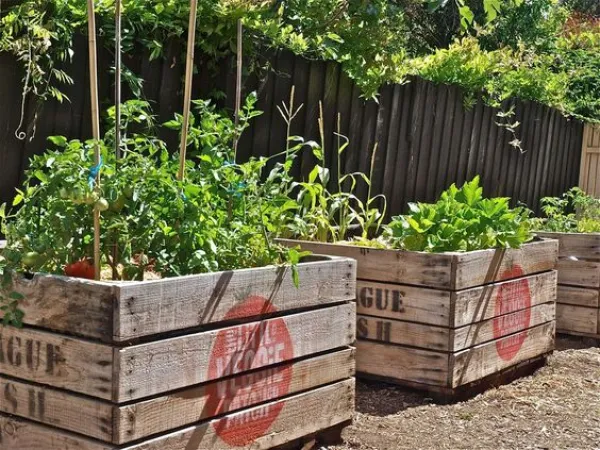
You can make a solid backdrop matching shelves to house miniature herbs and plants by upcycling the wood from an old crate. Charming tin buckets can be hung on a chain using L-Brakcets on either side. Enjoy this miniature garden indoors in a sunny area, or hang it on a porch. Label each plant to identify its type. The shelves are a helpful addition to home design because they can hold stunning blossoms for a brilliant flash of colour or practical herbs for cooking.
17. Utilise Kitchen Jars for Greenery
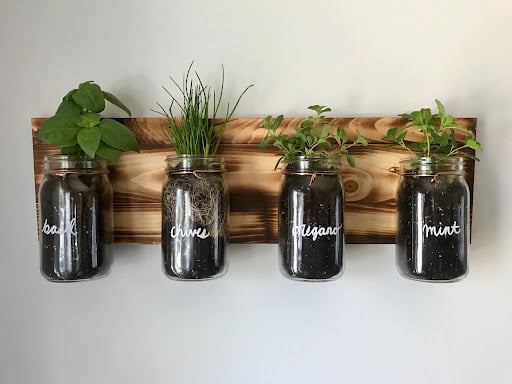
Use this innovative concept to convert a conventional kitchen spice rack into a useful garden. Herbs of all kinds are stored in recycled mason jars with pebbles at the bottom to promote proper drainage to give the jars a lively and rustic appearance. They can be fastened on boards. This vertical garden gives a kitchen an aesthetic flair while offering an easy way to get fresh, nutrient-rich herbs. They can also be placed on the floor or hung on a wall.
18. Floating Garden with Ceramic Planters
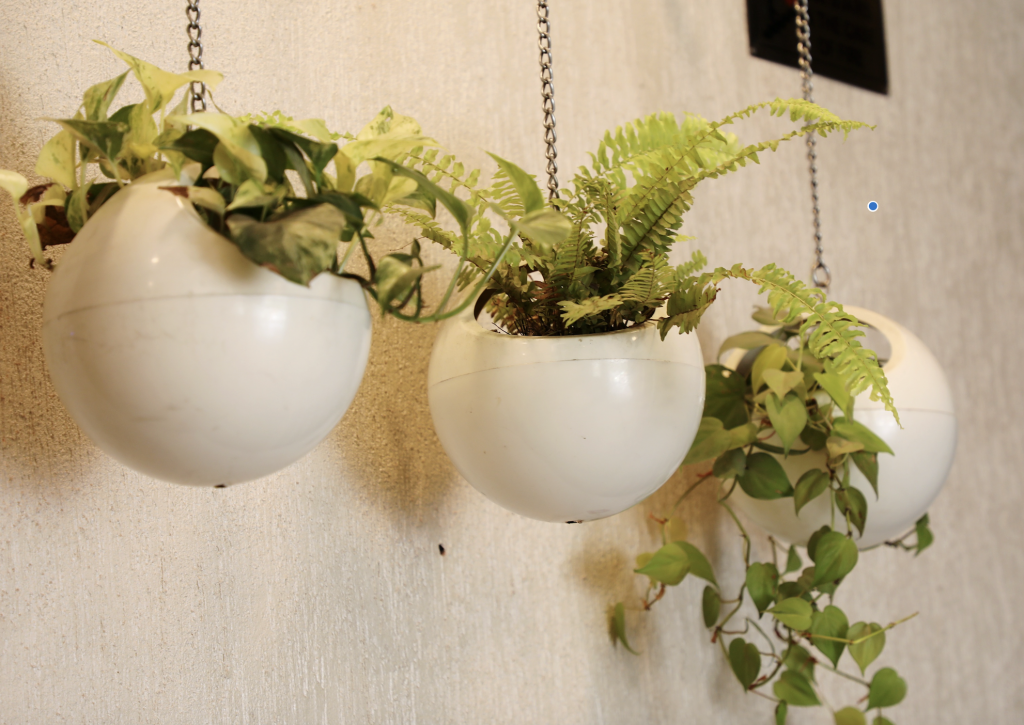
These tiny white ceramic planters give any room a whimsical touch by giving the impression that they are floating in the air. They are simple to move to other places of the house. Small flowers like pansies and daisies can be displayed in the pots, along with various types of greenery. Any room in the house can benefit from the use of these planters to add a splash of colour and a touch of nature.
19. Tin Cans for Creating a Vertical Garden
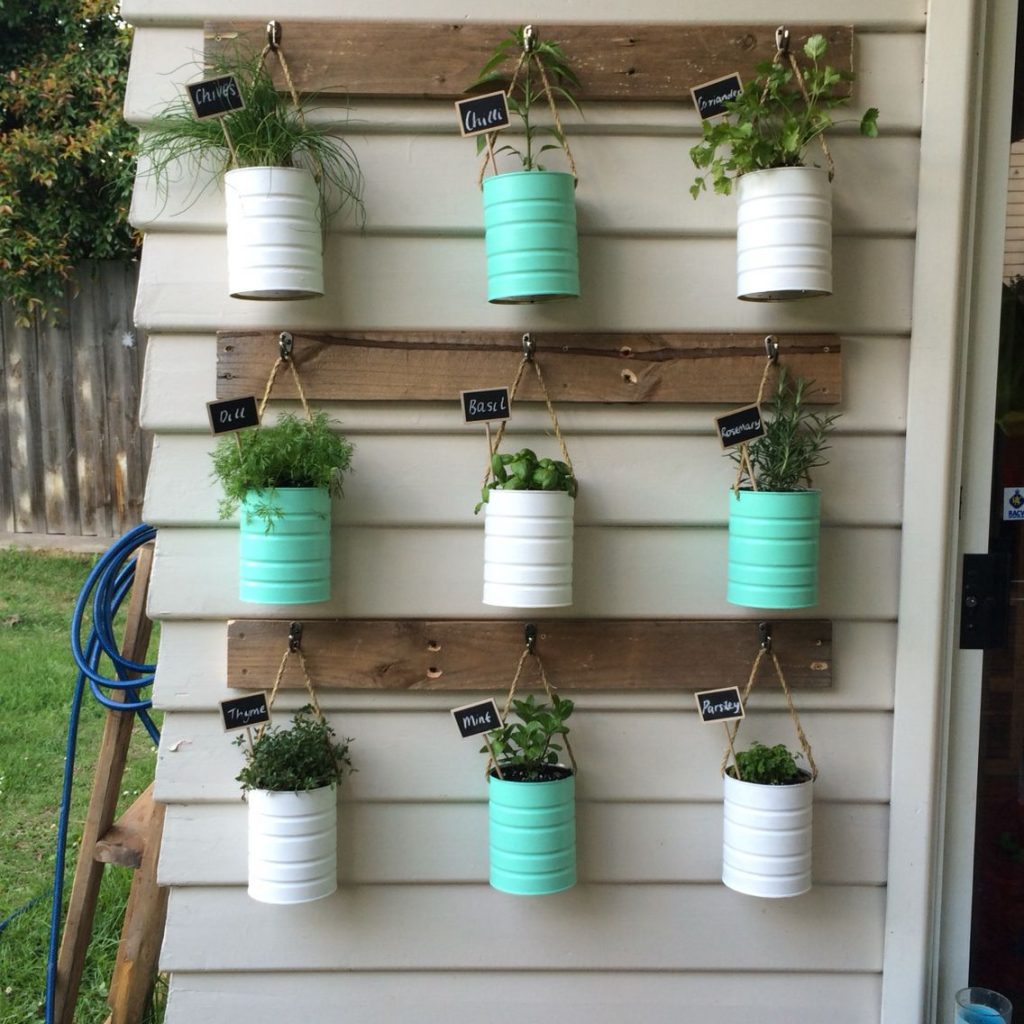
Reuse old paint tins and coffee cans as colourful metal planters for an ecological garden instead of throwing them out. To make a cheery and distinct arrangement of lovely blooms, paint them in vibrant and appealing colours and affix them to a whiteboard or wall. To make this garden practical as well as aesthetic, herbs might be used in place of flowers. This is the best way to put colours into any setting while also supporting sustainability by recycling discarded items for new purposes.
20. Create a Bohemian Look
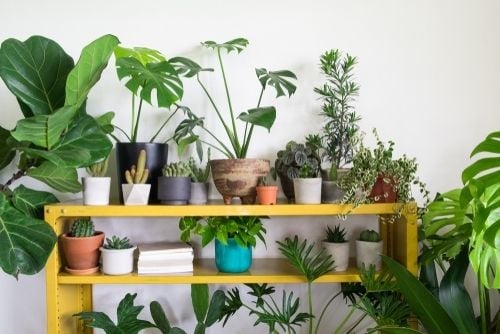
Any room can be transformed with the help of a rich green wall made of trailing plants like ivy, ferns, and orchids. In this particular design, the background is kept simple to let the plants shine and provide the feeling of an outside garden. The addition of colourful furniture and pillows creates a lovely contrast to the consistent greenery. This style is not just for outside areas but also can be used to brighten up a boring spot inside the house.
Wrapping Up
All in all, we can conclude from the above points that adding plants in a variety of forms can give every living area a touch of nature. If you do not have much space yet and want to bring the garden indoors, vertical gardens are a great solution. It can be made in a variety of inventive and distinctive ways, utilizing everything from recycled metal and wood to fabric pockets and hydroponics.
It can be customized to any style or preference, from rustic and old to modern and sleek, as shown by the samples given above. It is obvious that vertical gardens offer countless opportunities for innovation and creativity. Adding plants through these styles is a flexible approach for bringing nature into any living space, as well as offering a number of advantages.
Everyone can discover a way to make their own particular vertical garden that suits their demands and style, thanks to the wide range of possibilities available.
Frequently Asked Questions
What Is Vertical Gardening?
It is a method of growing plants in a vertical space rather than in horizontal beds. It involves using walls, shelves, fabrics, etc. to create a garden vertically that can accommodate a large number of plants in a small area. This technique is particularly useful for urban gardening in small spaces and indoor gardening, which allows you to grow herbs, vegetables, flowers, and other plants without requiring much space.
How Is Vertical Gardening Useful?
This technique can maximize space in small areas allowing for more plants to grow. It also allows for efficient use of water and nutrients and can also be a solution for those who do not have access to traditional methods of gardening, like a plot or yard. They are also aesthetically pleasing and add greenery and natural beauty both indoors and outdoors.
Which Irrigation System Is Best for Vertical Gardens?
Among various systems of irrigation, the best one depends on the specific needs and set-up of the garden. Drip irrigation is a common and efficient method of this technique as it delivers water directly to the plant’s roots, minimizing water waste and reducing the likelihood of overwatering.

